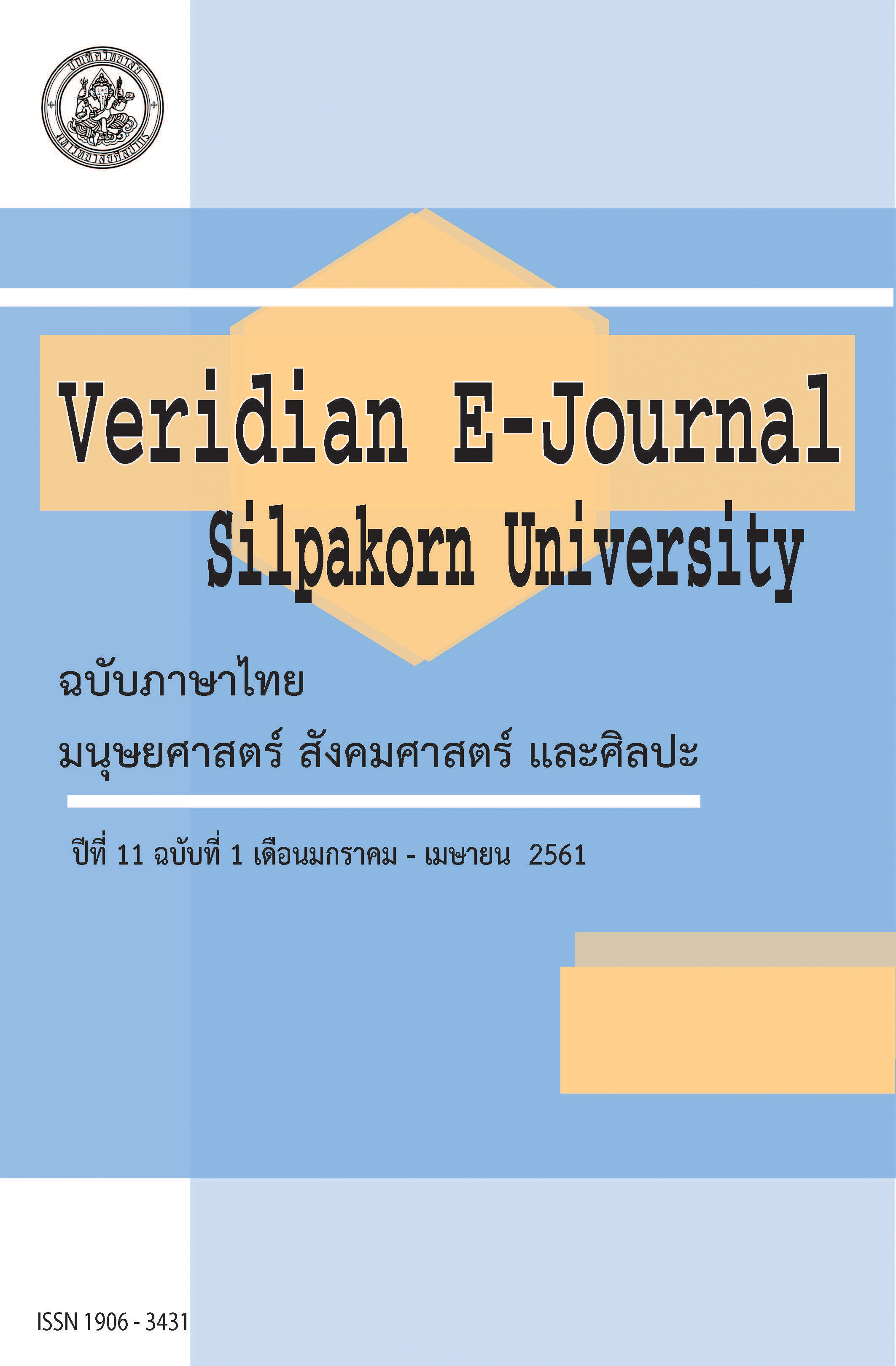การประเมินผลนโยบายช่วยเหลือชาวนานาไร่ละ 1,000 บาท ในจังหวัดสุรินทร์ (Evaluation of Helping Farmer Policy in the Case of the Spending 1,000 Baht Per Rai for Farmers Project in Surin Province)
Main Article Content
Abstract
วัตถุประสงค์ของการศึกษาวิจัย เพื่อประเมินนโยบายช่วยเหลือชาวนาไร่ละ 1,000 บาท ในจังหวัดสุรินทร์ ซึ่งการวิจัยเชิงคุณภาพใช้วิธีการสัมภาษณ์แบบเจาะจง จำนวน 16 คน ได้แก่ ตัวแทนชาวนา เจ้าหน้าที่ของภาครัฐเจ้าหน้าที่เกษตรอำเภอและผู้จัดการธนาคารเพื่อการเกษตรและสหกรณ์การเกษตร โดยใช้วิธีการวิเคราะห์แบบอุปนัย และข้อมูลที่ได้จากเอกสารจะใช้วิธีการวิเคราะห์เชิงเนื้อหา ส่วนการวิจัยเชิงปริมาณใช้ประชากรในการวิจัยจำนวน 400 คน โดยใช้สูตรของทาโร่ ยามาเน่ (Taro Yamane) การเก็บรวบรวมข้อมูลโดยใช้แบบสอบถามแบบเลือกตอบ และนำข้อมูลทั้งหมดไปวิเคราะห์ทางสถิติ ได้แก่ ค่าร้อยละ ค่าเฉลี่ย และส่วนเบี่ยงเบนมาตรฐาน ผลการศึกษาพบว่า : การประเมินประสิทธิภาพของการดำเนินนโยบาย ประกอบด้วย (1) ด้านบริบทหรือสภาวะแวดล้อมของนโยบาย พบว่า ชาวนาทราบถึงเป้าหมาย และวัตถุประสงค์ของโครงการจ่ายเงินช่วยเหลือชาวนาไร่ละ 1,000 บาท ซึ่งในเชิงปริมาณชาวนามีความเข้าใจเป้าหมายในการจ่ายเงินให้กับชาวนาจาการขึ้นทะเบียนเกษตรกรชาวนาขอรับเงินช่วยเหลือกับ ธกส. มีค่าสูงที่สุด (x= 3.08, S.D. = .838) (2) ด้านปัจจัยเบื้องต้นของนโยบาย พบว่า วัสดุอุปกรณ์ สื่อสิ่งพิมพ์ หรือทรัพยากรต่างๆ ที่เกี่ยวข้องกับการดำเนินงานใช้ร่วมกับงานประจำจึงสามารถดำเนินงานได้อย่างมีประสิทธิภาพ ซึ่งในเชิงปริมาณชาวนามีความเห็นว่าผู้นำชุมชนและเจ้าหน้าที่ของรัฐมีการประสานงานตามที่ส่วนราชการกำหนดได้อย่างทั่วถึงมีค่าสูงที่สุด (x= 3.07, S.D. = .854) (3) ด้านกระบวนการดำเนินการตามนโยบาย พบว่า หน่วยงานภาครัฐมีการจัดลำดับขั้นตอนการช่วยเหลือเกษตรกรชาวนาอย่างเป็นระบบ ประกอบกับการใช้ข้อมูลจากสมุดทะเบียนเกษตรกรในการนำไปใช้ในการตรวจสอบรับรองสิทธิ์ ซึ่งในเชิงปริมาณชาวนามีความเห็นว่าหน่วยงานภาครัฐมีการสำรวจและปรับปรุงรายชื่อผู้มีสิทธิไดรับเงินช่วยเหลืออยู่เสมอมีค่าสูงที่สุด (x= 3.16, S.D. = .804) และ (4) ด้านผลผลิตของนโยบาย พบว่า การแก้ไขปัญหาที่ชาวนาได้รับความเดือดร้อน ซึ่งรัฐบาลเข้ามาช่วยแบ่งเบาภาระค่าใช้จ่ายต้นทุนการเพาะปลูก ขับเคลื่อนเศรษฐกิจฐานล่างได้อย่างมีประสิทธิภาพ ซึ่งในเชิงปริมาณชาวนามีความเห็นว่านโยบายการช่วยเหลือชาวนาทำให้ชาวนาสามารถนำเงินที่ได้รับไปใช้จ่ายในภาคการเกษตรได้อย่างเหมาะสมมีค่าสูงที่สุด (x= 2.88, S.D. = .951)
The purpose of this research is to the Evaluation of Helping Farmer Policy in The Case of the Spending 1,000 Baht Per Rai for Farmers Project in Surin Province. Random interviewing with 16 specific people is used for a qualitative research. 16 Specific people are farmer representatives, government officers, district agricultural officers and the manager of Bank for Agriculture and Agricultural Cooperatives. The interviewing is analyzed by induction means while document information is analyzed by content analysis. For the qualitative analysis, the population of 400 is possessed by Taro Yamane's formula. The information collecting is performed by multiple choices questionnaire, then all data is analyzed by statistic means which are percentage, average and standard deviation. The research finding were as follows: The efficiency of the policy evaluation per following (1) For context aspect or policy surroundings, farmers are acknowledged of objectives and purposes of the project. Farmers understand objectives of the project by Farmer Registration for Participating the Project with Bank for Agriculture and Agricultural Cooperatives. The maximum score is (x= 3.08, S.D. = .838), (2) For the primitive factors of policy, materials, print media or other resources relating with the policy conducted, they have to used with daily works in order to conduct efficiently. Farmers suggest that community leaders and government officers to cooperate well to what the government appoints thoroughly. The maximum score is (x= 3.07, S.D. = .854), (3) For the policy procedure, state agencies priorities procedures for farmer helping systematically with the use of data from farmer register book in order to confirm the rights. Farmers suggest that state agencies survey and modify the register book regularly. The maximum score is
(x= 3.16, S.D. = .804), and (4) For the policy result, farmers who suffer are helped by the government which provides money for a part of cultivation capital and develops lower economic. Farmers suggest that the money provided by the policy enable them to purchase agricultural product properly. The maximum score is (x= 2.88, S.D. = .951).
